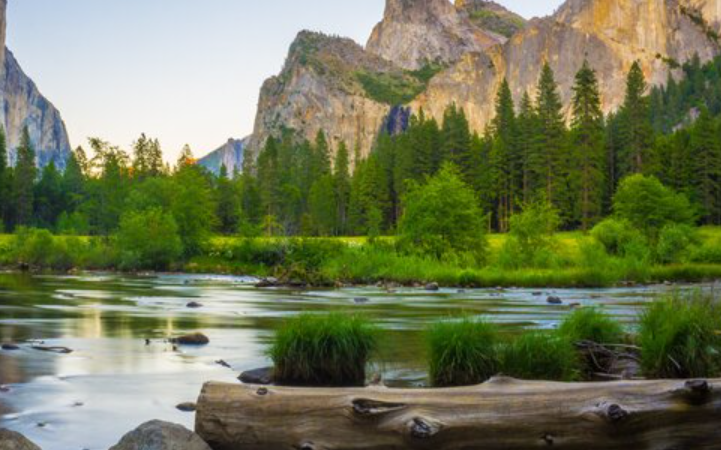The Icy Abyss: Exploring the Coldest Place on Earth”

The coldest place on Earth, a realm of unimaginable cold and isolation, stands as a testament to the extremes that our planet can reach. Amidst the vast expanse of the Antarctic, where the wind howls relentlessly and the temperatures plummet to bone-chilling depths, lies the coldest place on our planet. This remote and inhospitable location challenges the limits of human endurance and provides a glimpse into the raw power of nature. In this article, we embark on a journey to explore the mysteries and wonders of the coldest place on Earth.
Unraveling the Mystery:
The coldest place on Earth is found in Antarctica, the southernmost continent, where temperatures can plunge to astonishing lows. The specific location that holds the record for the lowest temperature ever recorded is the high ridge between Dome Argus and Dome Fuji on the East Antarctic Plateau. Here, in the desolate vastness of ice and snow, the mercury has dropped to an unfathomable -128.6 degrees Fahrenheit (-89.2 degrees Celsius). This bone-chilling temperature was documented by satellite measurements in 2010, revealing the extreme conditions that characterize this remote part of the world.
The East Antarctic Plateau:
The East Antarctic Plateau, where the coldest place on Earth is situated, is a high, flat expanse of ice and snow that stretches for thousands of miles. The combination of high altitude, clear skies, and dry air creates the ideal conditions for temperatures to plummet to extraordinary lows. Unlike coastal areas of Antarctica, which can experience milder temperatures due to the influence of ocean currents, the interior of the continent remains a frozen wilderness, largely untouched by human presence.
The Role of Katabatic Winds:
One of the factors that contribute to the extreme cold in this region is the presence of katabatic winds. These winds, fueled by the force of gravity as cold, dense air descends from the elevated plateau, can reach incredible speeds. As they race downhill, these winds carry frigid air with them, further intensifying the already harsh conditions. The combination of low temperatures and biting winds creates an environment that is not only incredibly cold but also exceptionally inhospitable.
Scientific Significance:
While the coldest place on Earth may seem like a desolate wasteland, it holds great significance for scientific research. The extreme conditions provide scientists with a unique opportunity to study the limits of life on Earth and gain insights into the possibilities of life in other extreme environments, including those on other planets. Researchers also utilize this region to study the Earth’s climate history by extracting ice cores that contain invaluable information about past atmospheric conditions and climate fluctuations.
Human Endurance in the Cold:
The coldest place on Earth challenges the limits of human endurance. The extreme cold poses significant risks to anyone venturing into this harsh environment, making it one of the most challenging places to conduct scientific research. Expedition teams equipped with specialized gear and technology brave the freezing temperatures to gather data and expand our understanding of Earth’s most hostile landscapes. The tales of their resilience and determination in the face of such adversity are a testament to the indomitable spirit of exploration.
Wildlife in the Frozen Wilderness:
Surprisingly, life exists even in the coldest place on Earth, albeit in a very limited and specialized form. Microorganisms, adapted to survive in extreme cold, have been discovered in the ice and snow of Antarctica. Some of these microorganisms have evolved unique mechanisms to withstand the harsh conditions, offering valuable insights into the adaptability of life in extreme environments. Additionally, certain species of seals, penguins, and other birds have adapted to the frigid climate, finding ways to thrive in this frozen wilderness.
Preserving the Coldest Place on Earth:
As we explore the coldest place on Earth, it becomes crucial to address the environmental challenges it faces. Climate change poses a threat to the delicate balance of the Antarctic ecosystem, and rising temperatures could have far-reaching consequences for this frozen expanse. International efforts to preserve the pristine wilderness of Antarctica aim to protect its unique ecosystems and maintain the scientific value of this remote region.
Conclusion:
The coldest place on Earth, hidden in the heart of Antarctica, remains a symbol of the extremes that our planet can reach. The East Antarctic Plateau, with its bone-chilling temperatures and relentless katabatic winds, challenges both human endurance and scientific curiosity. As we unravel the mysteries of this frozen wilderness, it is essential to recognize its significance in understanding the Earth’s past, present, and future. The coldest place on Earth stands as a stark reminder of the delicate balance of our planet and the need for concerted efforts to preserve its pristine beauty.






